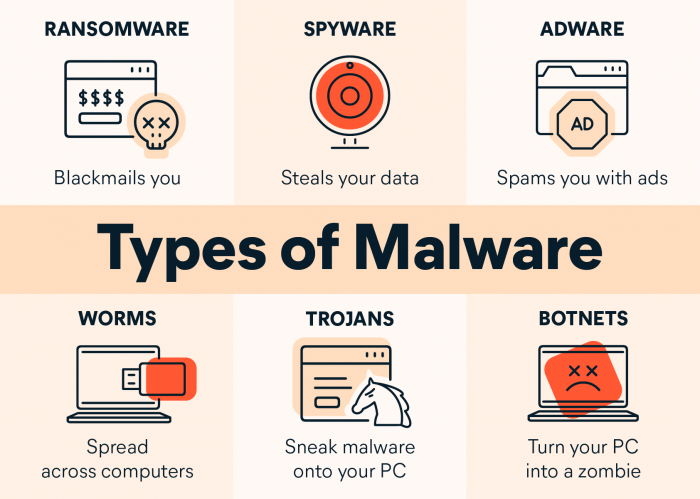
Malware is one of the biggest threats to computer users. There are a variety of different kinds of malware, but they all have one thing in common: they are designed by hackers to steal your personal information or cause damage to your computer. If you’re looking for more information on the subject, check out this list of the most common types of malware out there today.
Ransomware
Ransomware is a type of malware that encrypts your files and demands a ransom to decrypt them. It’s often delivered through email attachments or malicious links, and it can be spread through infected websites or USB drives. Ransomware attacks are typically carried out by hackers who have gained access to your computer without your knowledge–but they can also be perpetrated by other people who have a grudge against you and want money in exchange for releasing the files on your computer (or giving them back).
Spyware
Spyware is a type of malware that gathers information about you. It can be used to track your online activity, steal your personal information, and even hijack your computer. Most spyware is installed without your knowledge, but there are also types of spyware that are downloaded from websites or email attachments. The most common places for infections include free file sharing sites such as Megaupload and Rapidshare; streaming video sites like YouTube; social networks like Facebook and Twitter; instant messaging programs such as Skype (which has its own version called Fring); games with multiplayer features such as Farmville or Angry Birds Space.
Adware
Adware is a form of malware that displays advertisements in a way that is not obvious to the user. It often comes bundled with other software, such as games or applications, and can be installed without the user’s knowledge. While some adware programs are legitimate, many are created by cyber criminals who use them to display intrusive ads or generate revenue through popups and redirects. Adware removal instructions vary depending on what kind of adware program you have installed on your computer; generally speaking though, removing adware will require deleting the offending program from your system (which may also remove other programs).
Worms
A worm is a program that replicates itself and spreads to other computers over a network. It can use security holes in the operating system or other software on your computer to spread itself without your knowledge or permission, which means it’s often hard to stop them from spreading once they get started. Worms may be used for good purposes–to collect information about computer networks, for example–but they’re also used maliciously by cybercriminals who want to steal data or cause denial of service attacks (DoS).
Trojans
Trojans are malicious applications that appear to be legitimate software. They can be distributed through email attachments, malicious links on websites and even through social media platforms like Facebook and Twitter. They’re designed to look like legitimate programs or files, but they contain malicious code that allows hackers access to your computer systems once you open them.
Botnets
A botnet is a collection of compromised computers that can be controlled by a single entity. Botnets are often used for illegal activities, such as sending spam or stealing data from other people’s computers. Some botnets will also launch denial-of-service (DoS) attacks against websites and networks, which can make it difficult for legitimate users to access them. A botnet is made up of many different types of malware, including viruses and worms that infect computers and turn them into part of the network. Attackers can then use these infected machines to carry out their plans without ever having physical access to them–they simply send commands from wherever they want using internet connections provided by their victims’ computers!
We hope you enjoyed learning about the different types of malware. If you want to learn more about this topic, check out our blog post on ransomware .
